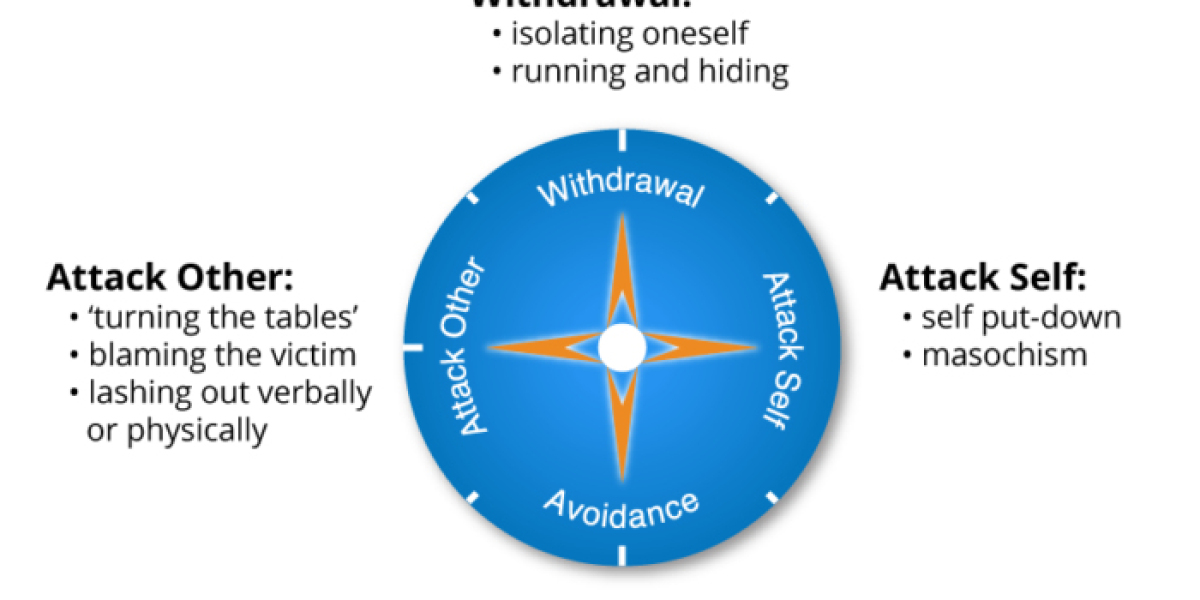The compass of shame serves as a powerful analytical framework for understanding how individuals respond to feelings of shame, particularly in challenging conversations about race, equity, and justice. This psychological model identifies four distinct pathways that people typically follow when experiencing shame: attack others, attack self, avoidance, and withdrawal. By recognizing these patterns, educators, administrators, and community leaders can better navigate difficult conversations and work toward meaningful change.
Shame represents a universal human emotion that emerges when we feel exposed, inadequate, or threatened in our sense of self-worth. Unlike guilt, which focuses on specific actions, shame attacks our core identity and sense of belonging. When individuals encounter information that challenges their worldview or suggests complicity in harmful systems, shame often emerges as a natural response. The compass of shame helps us understand that these responses are predictable and can be redirected toward productive outcomes.
The significance of the compass of shame extends beyond individual psychology to encompass organizational and systemic change efforts. When institutions attempt to address racism, implicit bias, or other forms of inequity, they inevitably encounter shame responses from various stakeholders. Understanding these responses allows leaders to anticipate challenges, provide appropriate support, and create pathways for growth rather than defensiveness.
The Four Directions of the Compass of Shame Framework
The compass of shame identifies four primary directions that individuals navigate when experiencing shame-inducing situations. Each direction represents a different strategy for managing uncomfortable feelings, though not all strategies lead to productive outcomes or genuine healing. Understanding these directions helps facilitators and leaders recognize patterns and respond appropriately to different shame responses.
Attack others represents one of the most destructive directions on the compass of shame. This response involves projecting shame onto others by making oneself a victim or attacking those who raise concerns about inequity. In racial equity conversations, this manifests as accusations of reverse racism, claims of race-baiting, or attempts to silence voices raising legitimate concerns about discrimination. This response seeks to deflect responsibility by making the messenger the problem rather than addressing the underlying issues.
Attack self constitutes another direction where individuals turn their shame inward, often leading to excessive guilt, self-flagellation, or attempts to absolve themselves through performative actions. While this response may seem more socially acceptable than attacking others, it often proves equally unproductive because it centers the shame-bearer's feelings rather than focusing on systemic change and healing for those who have been harmed.
Implementing the Compass of Shame in Educational Settings
Educational institutions seeking to address racial equity and create more inclusive environments can benefit significantly from understanding and applying the compass of shame framework. Implementation requires training administrators, teachers, and staff to recognize shame responses in themselves and others while developing skills to redirect these responses toward productive dialogue and action. Resources for comprehensive training and implementation can be found at akoben.org, which provides detailed guidance for educators working to transform their practice through restorative and equity-focused approaches.
The physical and emotional environment plays a crucial role in how shame responses manifest during equity conversations. Schools must create safe spaces where individuals can experience discomfort without feeling attacked or judged. This involves establishing clear ground rules for dialogue, providing multiple opportunities for processing, and ensuring that conversations focus on systems and behaviors rather than personal character attacks.
Professional development programs should incorporate the compass of shame framework into broader equity training initiatives. Staff need opportunities to understand their own shame triggers, practice navigating difficult conversations, and develop skills for supporting others who are experiencing shame responses. This training must be ongoing rather than one-time events, as developing these skills requires practice and reflection over time.
Leadership Applications of the Compass of Shame Model
Effective leadership in addressing racial equity requires deep understanding of how shame operates in organizational change processes. Leaders must recognize their own shame responses while simultaneously supporting others who are navigating similar feelings. This dual awareness allows leaders to model healthy responses to shame while creating conditions for organizational growth and transformation.
Transformational leaders understand that addressing racism and inequity inevitably triggers shame in various stakeholders, including themselves. Rather than avoiding these conversations or becoming defensive when challenged, effective leaders lean into discomfort and model curiosity, humility, and commitment to learning. They create organizational cultures where making mistakes is viewed as part of the learning process rather than evidence of moral failure.
Dr. Malik Muhammad emphasizes that leaders must develop their own emotional intelligence and self-awareness to effectively guide others through shame-inducing conversations. This involves ongoing personal work, including examining one's own biases, privileges, and past actions that may have contributed to harm. Leaders who engage in this personal work authentically create permission for others to do the same.
Community-Centered Approaches to Navigating Shame
Community-centered approaches to the compass of shame recognize that shame responses are influenced by cultural backgrounds, historical experiences, and community contexts. Different communities may express shame differently and require varying approaches to support healing and growth. Effective interventions must be culturally responsive and build upon existing community strengths and wisdom.
Historical trauma adds complexity to shame responses, particularly for communities that have experienced systemic oppression and violence. Understanding how historical trauma influences current shame responses helps facilitators provide appropriate support and avoid re-traumatization during equity conversations. This requires knowledge of specific community histories and ongoing impacts of systemic racism.
Iman Shabazz highlights that community healing approaches must center the voices and experiences of those most impacted by racism and inequity. Rather than focusing primarily on the shame of those in positions of privilege, community-centered approaches prioritize the healing and empowerment of marginalized communities while still providing pathways for others to engage productively in change efforts.
Transforming Shame Responses into Growth Opportunities
The ultimate goal of understanding the compass of shame is not to eliminate shame but to transform shame responses into opportunities for growth, learning, and positive action. This transformation requires specific skills and approaches that help individuals move through shame rather than becoming stuck in unproductive patterns. Effective facilitation creates pathways for people to acknowledge their discomfort while taking responsibility for their role in harmful systems.
Restorative practices provide powerful tools for transforming shame responses because they focus on repairing relationships and addressing harm rather than punishment or blame. When individuals can see pathways for making amends and contributing to positive change, they are more likely to move through shame productively rather than getting stuck in defensive responses.
Creating accountability systems that support growth rather than punishment helps individuals navigate shame more effectively. These systems acknowledge that everyone makes mistakes while maintaining clear expectations for learning and behavior change. When people understand that their worth as human beings is not determined by their mistakes, they become more willing to acknowledge problems and work toward solutions.
The Role of Vulnerability and Authenticity in Shame Resilience
Building resilience to shame requires developing comfort with vulnerability and authenticity in difficult conversations. This involves creating cultures where people can acknowledge their limitations, mistakes, and areas for growth without fear of being ostracized or attacked. Vulnerability allows for genuine connection and learning that defensive responses prevent.
Authenticity in shame conversations means being honest about one's own experiences, including past actions that may have caused harm and ongoing areas for growth. This authenticity creates permission for others to be similarly honest while building trust necessary for meaningful dialogue. Leaders who model authentic vulnerability demonstrate that growth is possible and worthwhile.
Shame resilience also involves developing skills for self-compassion and emotional regulation during difficult conversations. Individuals need tools for managing their emotional responses while remaining engaged in important discussions. This includes breathing techniques, grounding exercises, and self-talk strategies that help maintain emotional equilibrium during challenging moments.
Measuring Progress and Sustaining Change Through the Compass of Shame
Effective use of the compass of shame framework requires ongoing assessment of how individuals and organizations are progressing in their ability to navigate shame productively. This involves tracking both individual development and organizational culture changes over time. Measurement should include both quantitative indicators and qualitative observations about conversation quality and relationship dynamics.
Individual progress can be measured through self-reflection tools, peer feedback, and behavioral observations during equity conversations. Organizations should look for decreases in defensive responses, increases in curiosity and learning-oriented questions, and greater willingness to acknowledge and address problems when they arise. These indicators suggest that people are developing healthier responses to shame-inducing situations.
Organizational sustainability requires embedding compass of shame awareness into policies, procedures, and ongoing professional development. This framework should become part of how the organization approaches all challenging conversations, not just those related to racial equity. When compass of shame principles are integrated into organizational DNA, they create lasting capacity for navigating difficult topics productively.
Future Applications and Expanding the Compass of Shame Framework
The compass of shame framework has applications beyond racial equity conversations, including discussions about other forms of bias, organizational change, and interpersonal conflicts. As understanding of this framework deepens, new applications continue to emerge in various professional and community contexts. The principles remain consistent while specific strategies may be adapted for different situations.
Research continues to expand understanding of how shame operates in different populations and contexts. This ongoing research informs refinements to the compass of shame framework and development of new interventions for supporting healthy shame responses. Staying current with this research helps practitioners provide the most effective support possible.
Training programs are expanding to include compass of shame awareness in various professional contexts, including healthcare, social work, law enforcement, and community organizing. This expansion creates opportunities for broader social change as more people develop skills for navigating difficult conversations productively rather than defensively.















